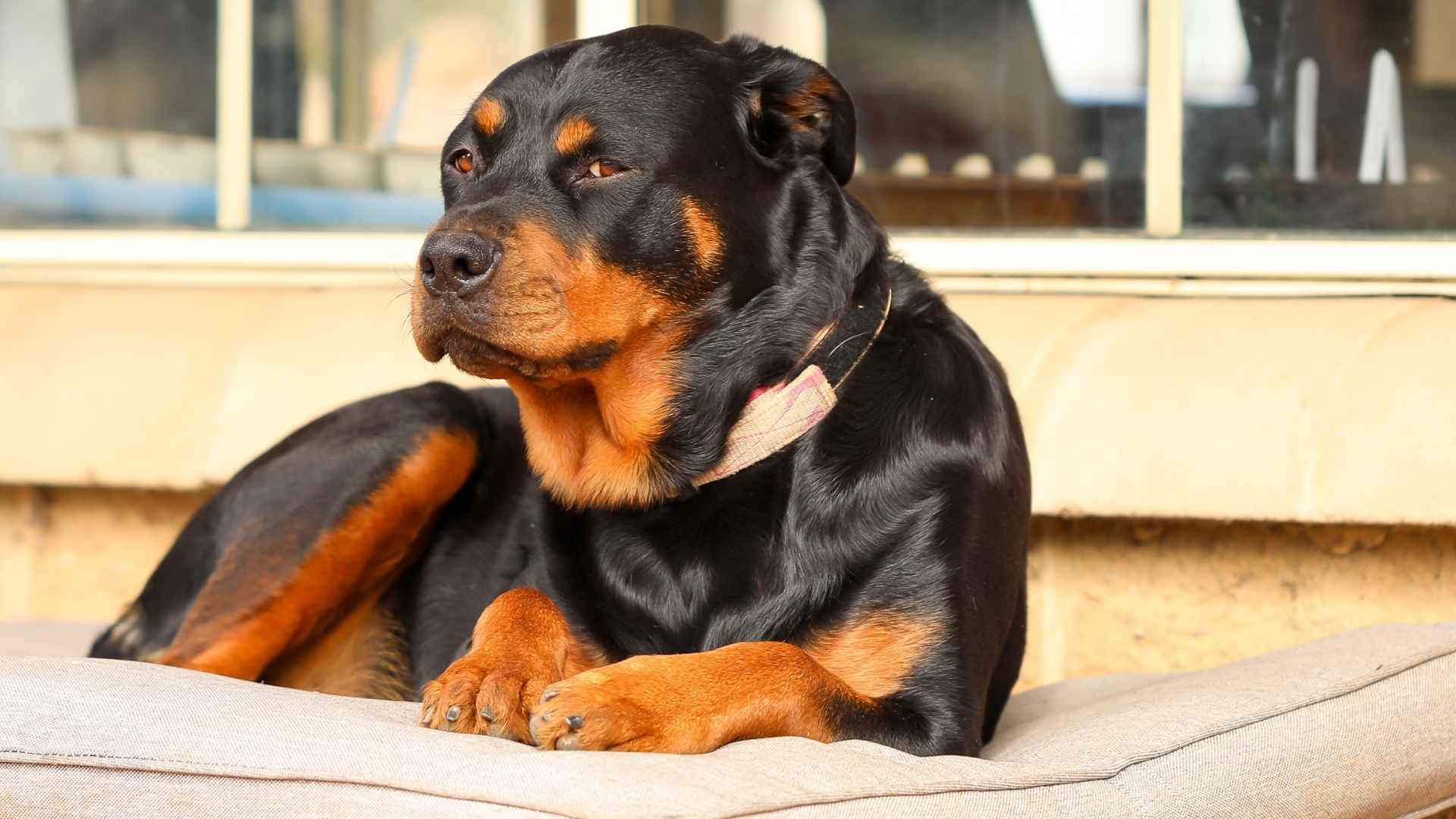Throughout history, dogs have been trusted protectors of homes, livestock, and people. Long before they were our beloved companions, many breeds were purposefully developed for guarding duties, valued for their loyalty, strength, and unwavering vigilance. While today’s dogs often double as family pets, many still retain the natural instincts that made them exceptional watchdogs.
In particular, large dog breeds tend to make ideal guardians. Their imposing presence alone is often enough to deter intruders, but it’s their intelligence, protective nature, and deep bond with their owners that truly sets them apart. These dogs don’t just bark at the mailman; they instinctively sense threats and react accordingly, providing both comfort and security.
Whether you live in the suburbs or on a sprawling rural property, a naturally watchful dog can offer peace of mind and a lot of love. In this article, we’ll explore the top large dog breeds that are not only fierce protectors but also loyal family members.
Large Dog Breeds That Are Natural Watchdogs
1. Rottweiler
Origin: Germany
Group: Working
Size: Large
Typical Weight: 80–135 lbs
Lifespan: 9–10 years
Rottweilers are muscular, confident dogs bred for strength and endurance. Their roots trace back to ancient Roman drover dogs, used to herd livestock and guard valuables. These early traits remain deeply embedded in the breed today, making them natural protectors.
Despite their imposing presence, Rottweilers are deeply loyal to their families. With consistent training and early socialization, they become devoted companions that balance affection with vigilance. They enjoy structured environments and thrive when given a job to do.
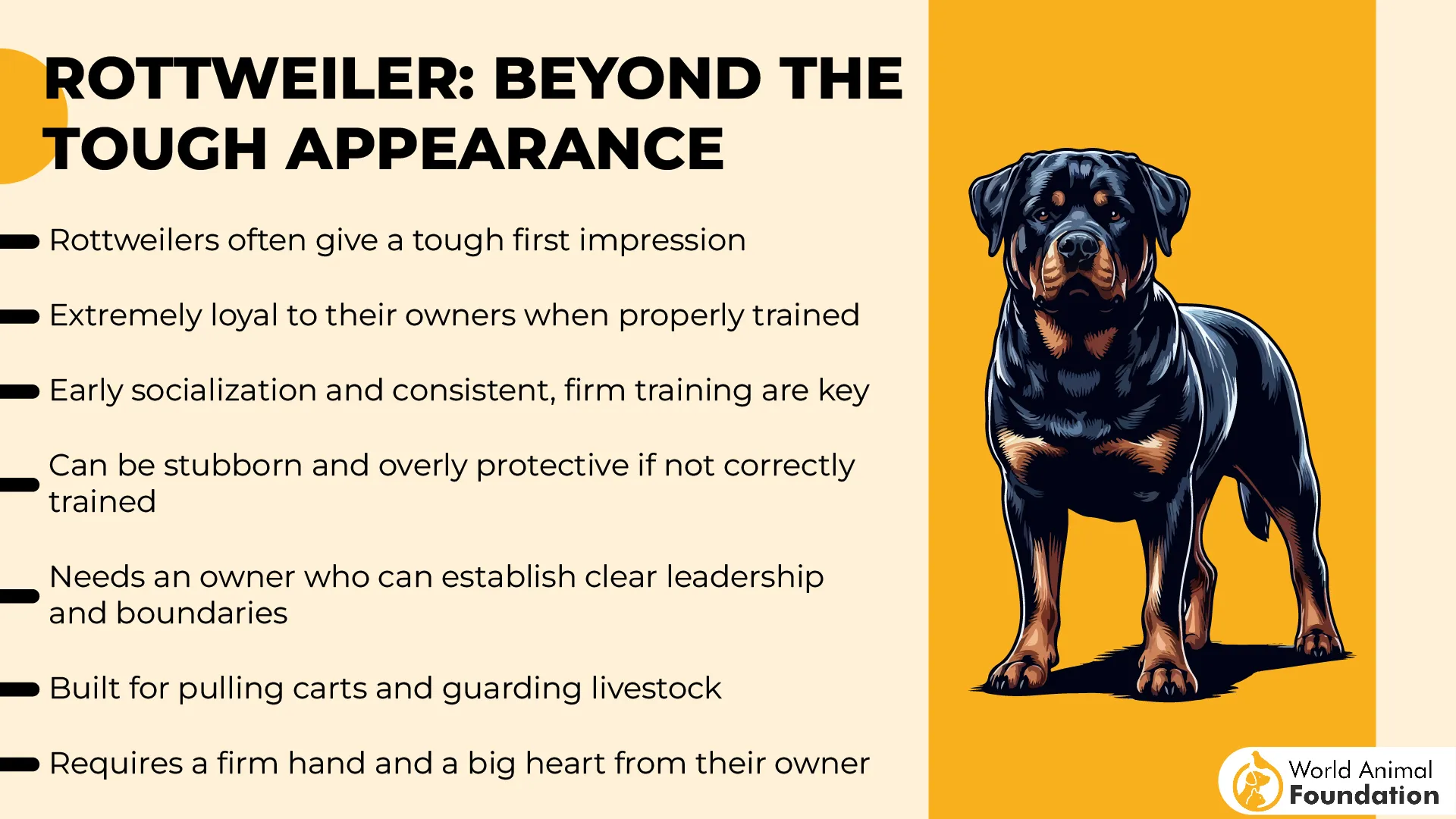
As per PetMD, the breed is highly intelligent and trainable, often excelling in roles such as police, therapy, or service dogs. However, they require firm leadership and mental stimulation to prevent stubborn or territorial behavior.
While Rottweilers are generally calm and composed, they are quick to act when something feels off. Their keen awareness and quiet confidence make them one of the most reliable large breeds for home protection.
2. Boerboel
Origin: South Africa
Group: Working
Size: Giant
Typical Weight: 110–180 lbs
Lifespan: 9–11 years
Boerboels are massive, mastiff-type guardians originally bred to protect South African farms from predators and intruders. With a broad head, thick build, and commanding posture, they are among the most physically imposing of the large dog breeds.
Beneath their tough exterior, Boerboels are affectionate and family-oriented. They form strong bonds with their household and are especially gentle with children, provided proper socialization. While devoted at home, they tend to be aloof or wary of strangers.
Training and consistent leadership are essential. Boerboels are dominant by nature and can be stubborn without a confident, experienced owner. Early and ongoing socialization helps ensure they’re balanced and manageable in public or around guests.
Due to their size and protective drive, Boerboels do best in homes with plenty of space and a secure yard. They’re not overly energetic, but they need daily mental and physical activity to stay fit and content.
3. Giant Schnauzer
Origin: Germany
Group: Working
Size: Large
Typical Weight: 60–105 lbs
Lifespan: 12–15 years
Giant Schnauzers are bold, energetic protectors originally bred to drive cattle and guard property in Bavaria. With their alert expression, dense, wiry coat, and distinctive beard, they cut an imposing figure and take their guarding duties seriously. Despite their size, they’re agile and responsive, well-suited to active homes that offer plenty of physical and mental engagement.
These intelligent dogs are natural watchdogs, vocal, observant, and suspicious of strangers until properly introduced. They form deep bonds with their family and thrive when included in household routines. While affectionate and loyal, they tend to assert themselves and need firm, consistent training from an early age.
High energy defines the Giant Schnauzer. Purina states that they demand daily exercise, structured activities, and mental stimulation to stay balanced. Without this outlet, they may develop behavioral challenges or become destructive out of boredom.
Though often serious and work-driven, Giant Schnauzers enjoy playtime and companionship. With proper socialization, they can live peacefully with children and other pets, especially those of the opposite sex.
4. Cane Corso
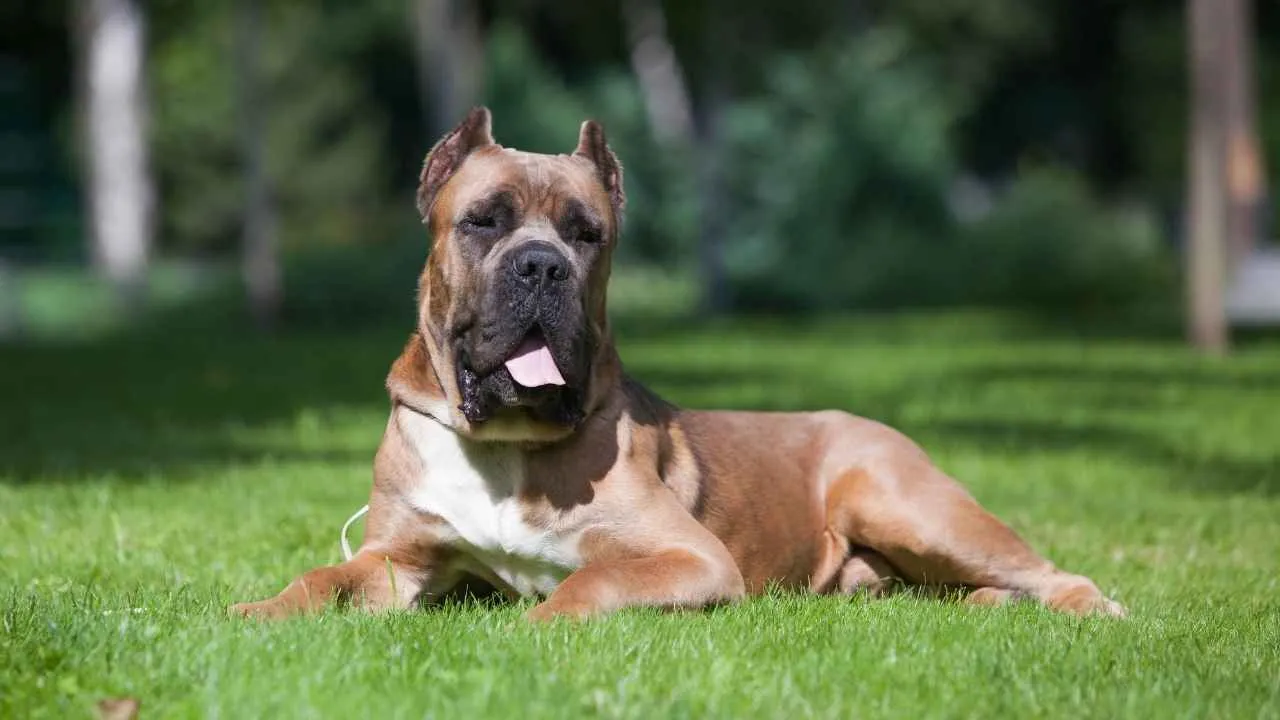
Origin: Italy
Group: Working
Size: Large
Typical Weight: 90–110 lbs
Lifespan: 9–12 years
Cane Corsos are powerful, athletic guardians descended from Roman war dogs. Muscular and imposing with a square build and broad head, they were developed in Italy to hunt wild boar and guard livestock and property. Their intense gaze and confident demeanor make them one of the most formidable natural watchdogs.
This breed is highly devoted to its family, affectionate with loved ones, yet naturally wary of strangers. With strong protective instincts, the Cane Corso excels in guarding roles, but it requires early socialization and structured training to be a safe, balanced companion.
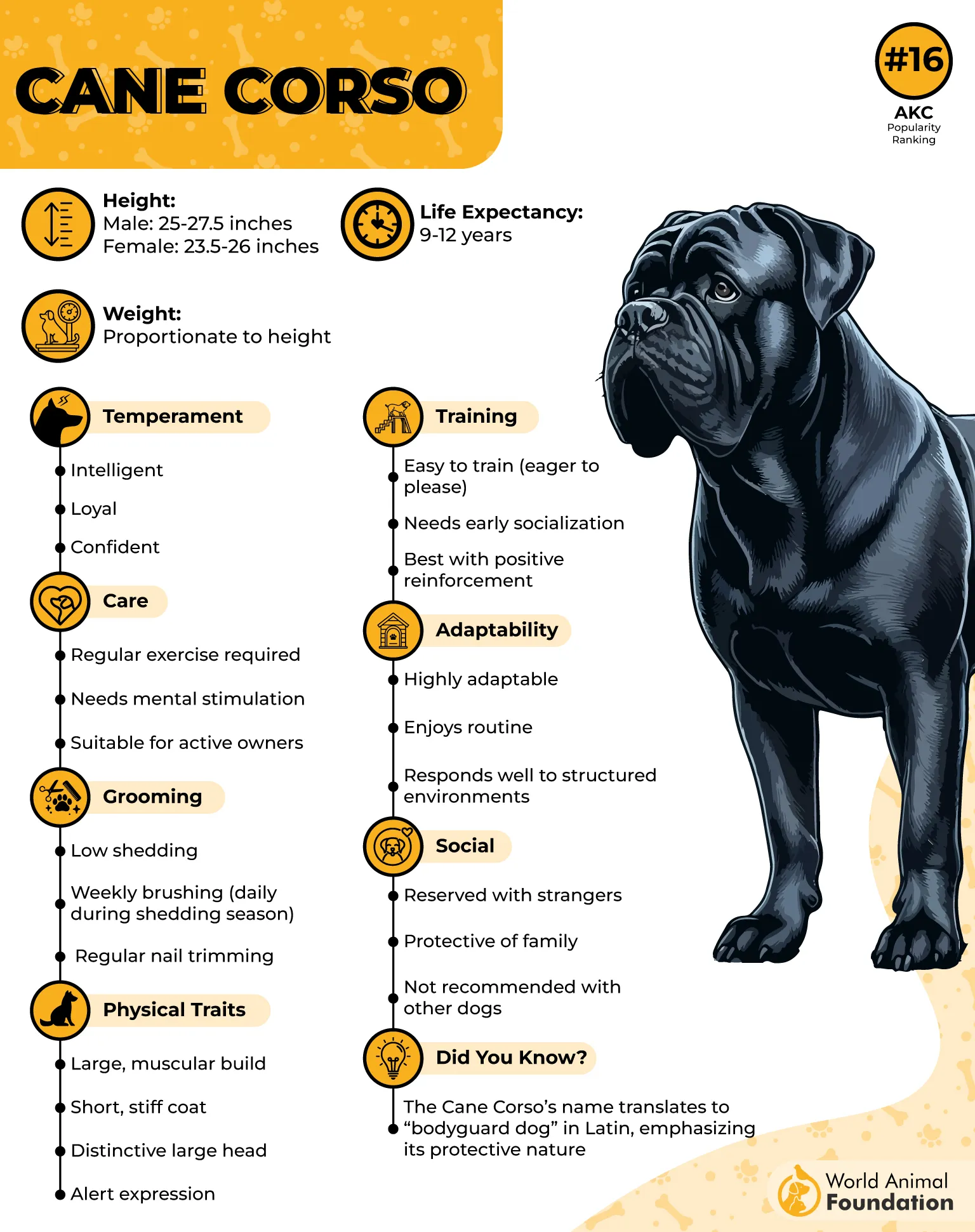
Cane Corsos are energetic and intelligent, craving both physical activity and mental challenges. Long walks, hikes, and structured games keep them calm and focused. Without sufficient stimulation, they may grow restless or assertive.
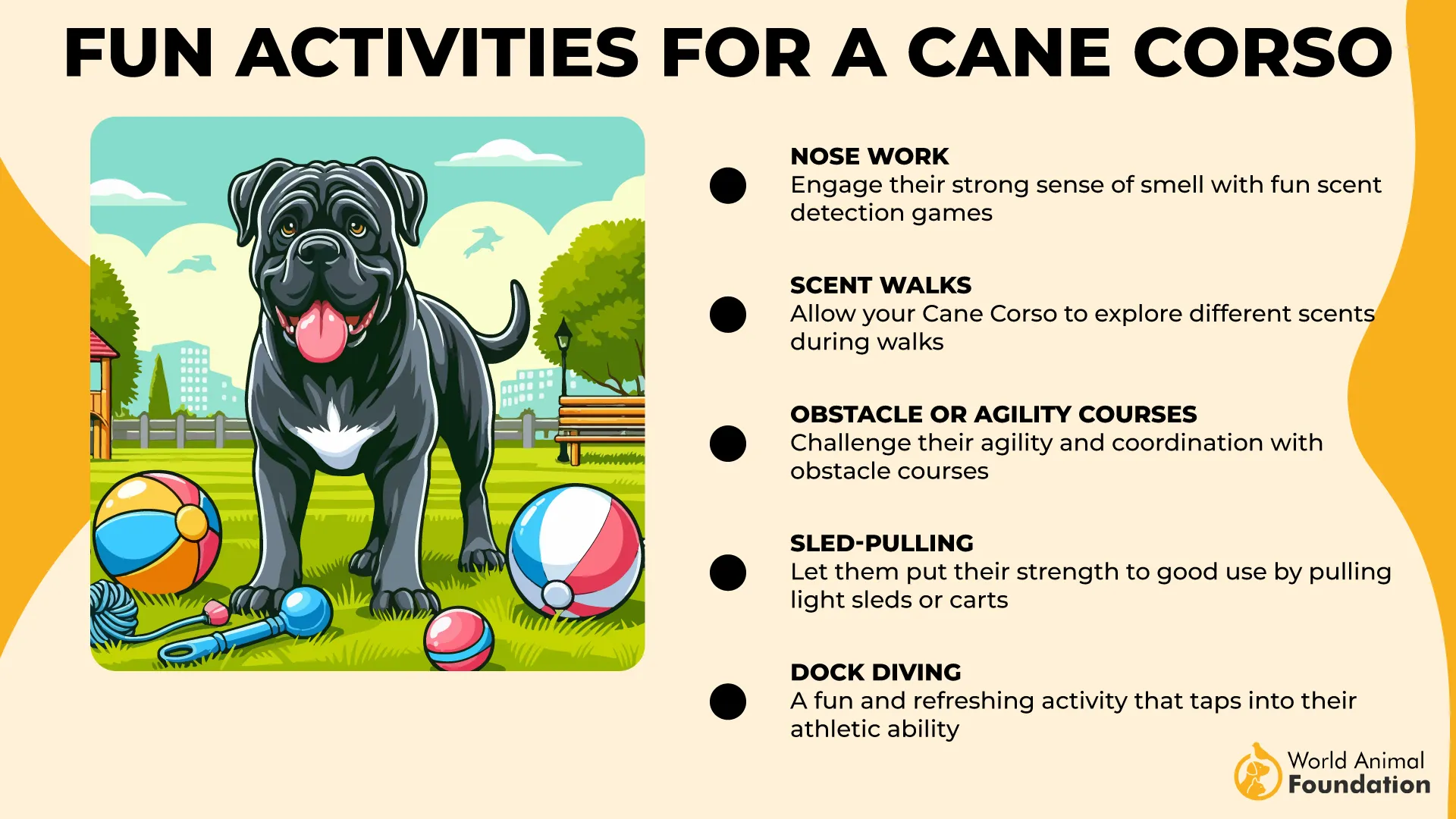
Not ideal for novice dog owners, Cane Corsos demand confident leadership. With proper boundaries and respectful training, they become loyal, stable family dogs and reliable protectors.
5. Airedale Terrier
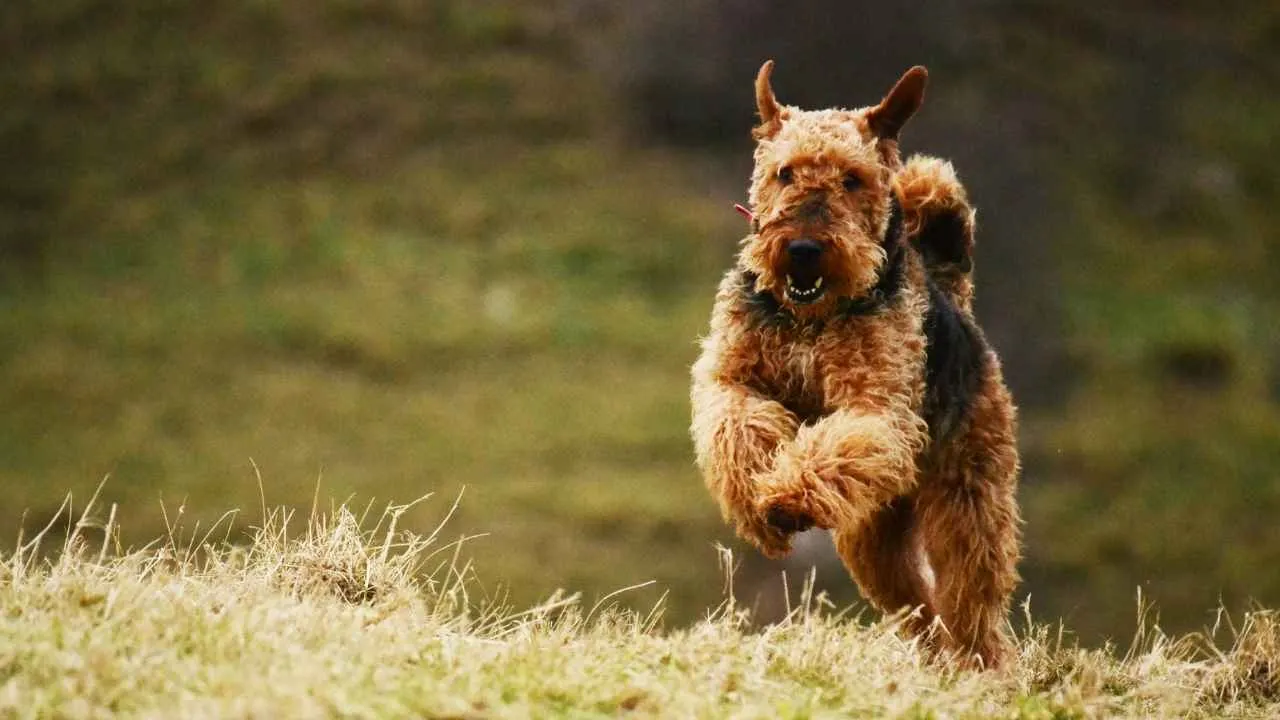
Origin: England
Group: Terrier
Size: Medium–Large
Typical Weight: 40–50 lbs
Lifespan: 10–12 years
The Airedale Terrier, known as the “King of Terriers,” is the largest of the terrier breeds and among the most versatile. Bred in Yorkshire for hunting otters and rats, Airedales later proved their worth as wartime messengers and police dogs due to their courage and intelligence. With a wiry outer coat and soft undercoat, they require regular grooming, often by hand stripping.
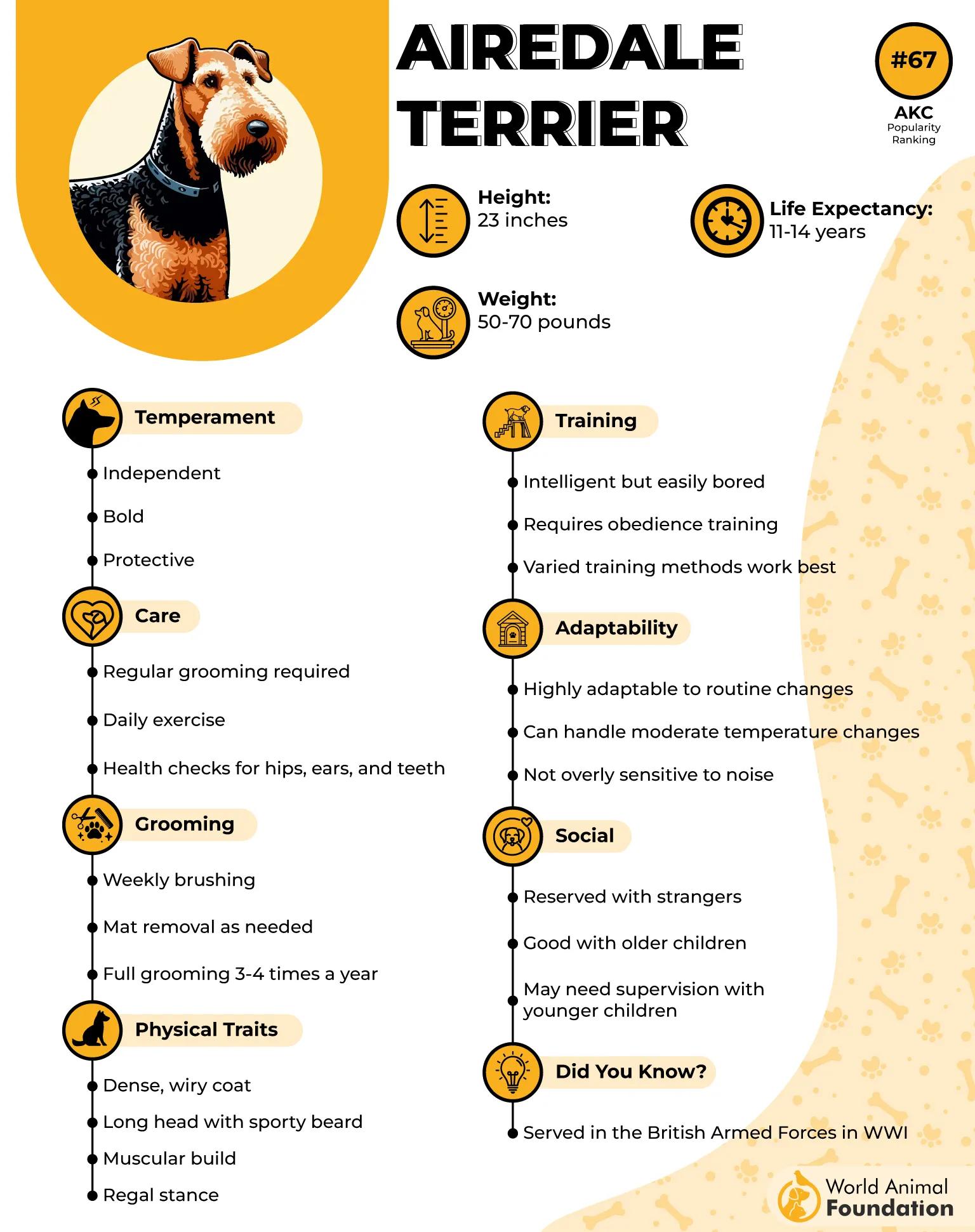
According to Orvis, Airedales are spirited, confident, and fiercely loyal. They love children and thrive in active households, though their exuberance means supervision is needed around young kids. While they can live peacefully with other pets when socialized early, their prey drive makes them unreliable with smaller animals.
Protective yet playful, Airedales are enthusiastic participants in canine sports and agility. Their independence can be mistaken for stubbornness, so consistent, reward-based training is essential. When engaged and well-exercised, they’re affectionate, amusing companions. Airedales need space to roam and a task to stay sharp—they’re not suited for apartment life or sedentary owners.
6. German Shepherd
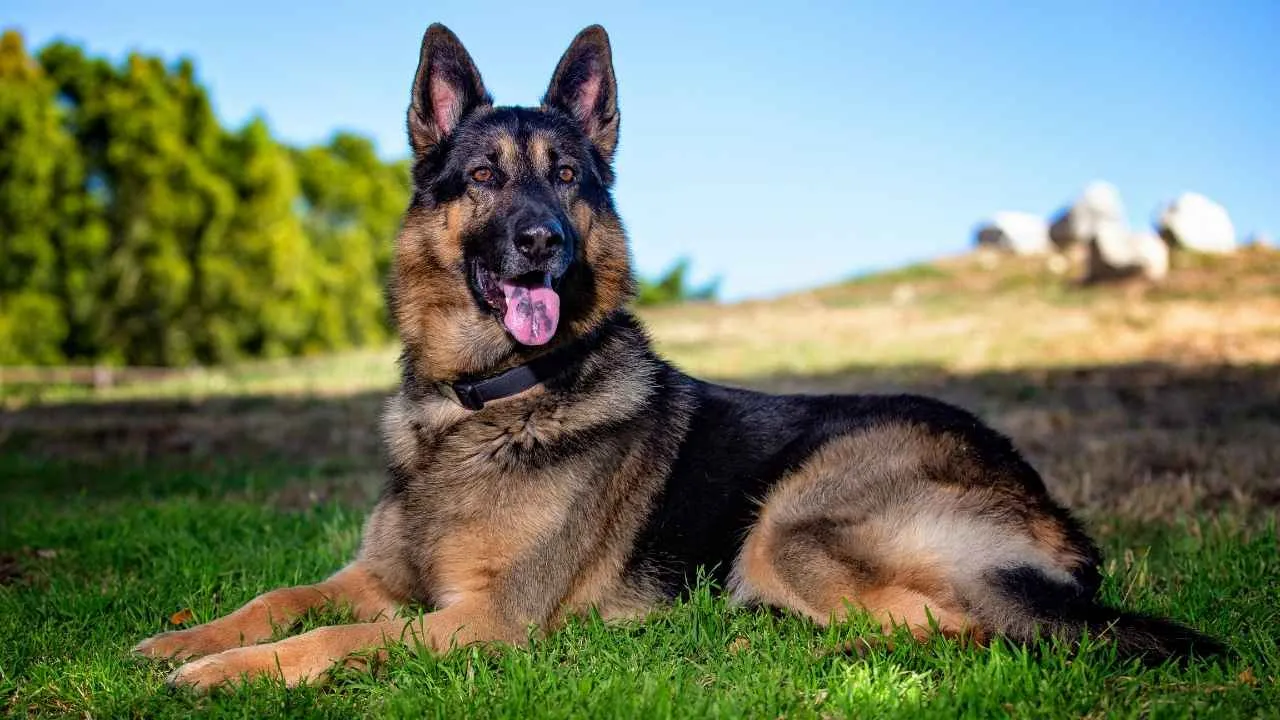
Origin: Germany
Group: Working
Size: Large
Typical Weight: 50–90 lbs
Lifespan: 7–10 years
The German Shepherd is a powerful, intelligent working breed revered for its loyalty and trainability. Developed in the late 19th century for herding and protection, the breed soon became a top choice for military, police, and service work. With a confident, alert demeanor and a muscular frame, German Shepherds thrive when given a purpose.
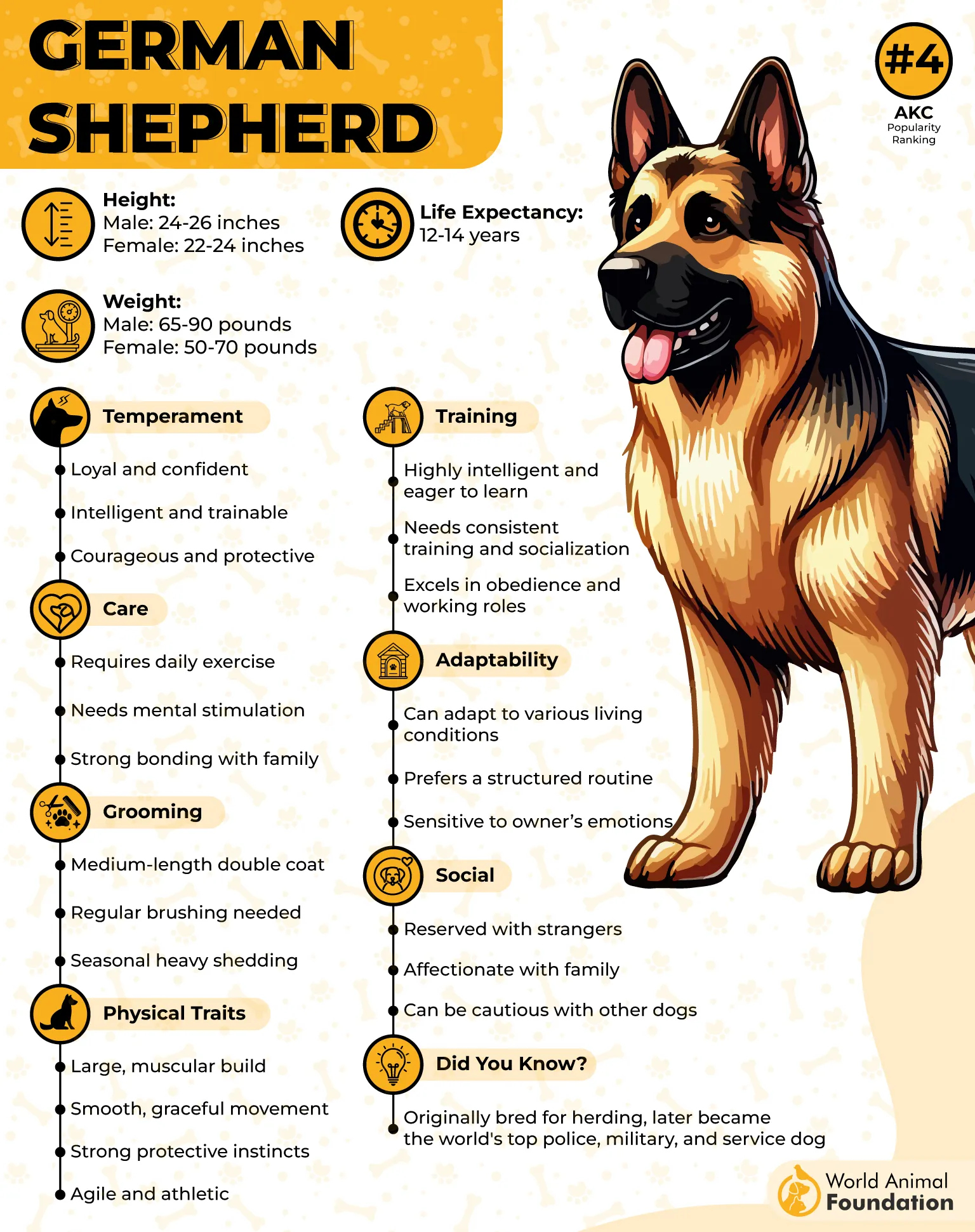
They are deeply loyal to their families and particularly protective of children. Early socialization is vital to temper their suspicion of strangers. GSDs are best suited for active homes where they can exercise vigorously, at least 90 minutes daily, and engage in mentally stimulating activities like obedience or agility.
Natural athletes and quick learners, German Shepherds form tight bonds with their handlers and aim to please. Without enough structure or stimulation, they can become anxious or destructive. While not always ideal for first-time dog owners, a well-trained Shepherd is unmatched in devotion and versatility. With the right care, this iconic breed is a steadfast guardian, loyal friend, and noble presence in any household.
7. Doberman Pinscher
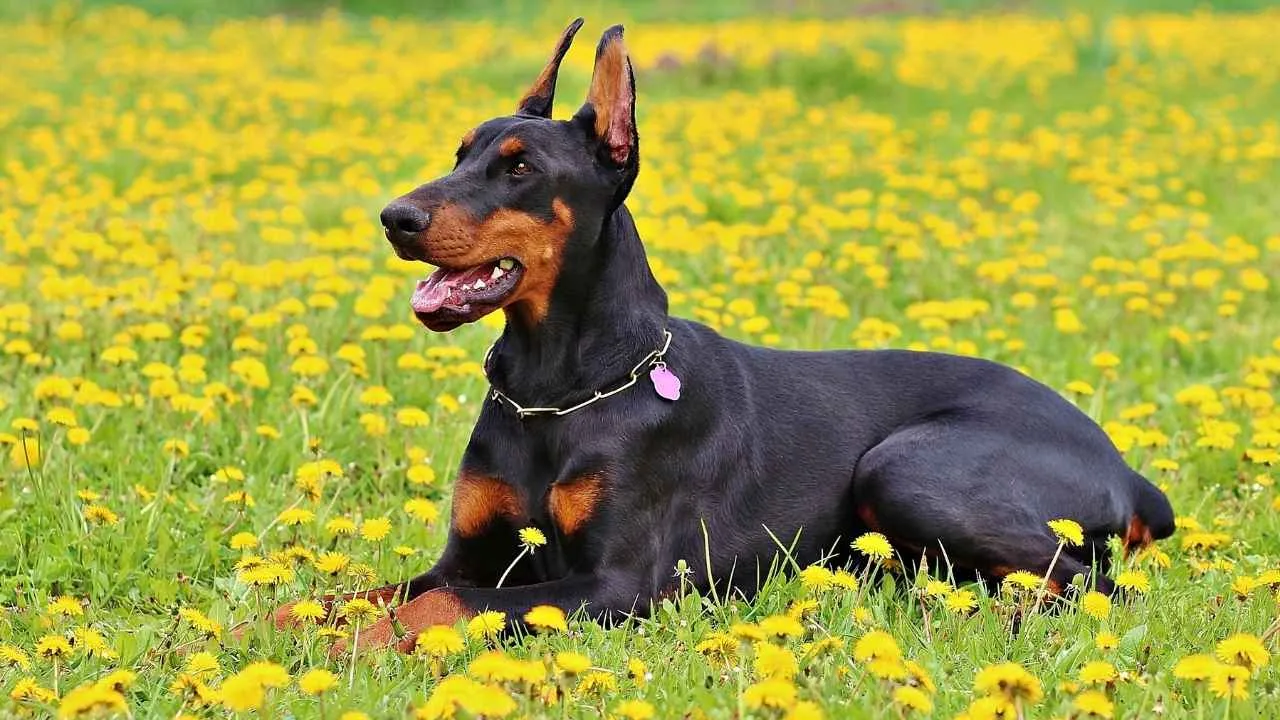
Origin: Germany
Group: Working
Size: Medium–Large
Typical Weight: 65–100 lbs
Lifespan: 10–12 years
The Doberman Pinscher is a sleek, muscular breed developed in 19th-century Germany for personal protection. Originally bred by tax collector Karl Friedrich Louis Dobermann, the breed combined power and loyalty with intelligence and agility. Modern Dobermans maintain these traits while adapting well to both active family life and serious working roles.
Despite a tough exterior, Dobermans are affectionate with their families and form close bonds with their people. Their loyalty often translates into protectiveness, making them vigilant and instinctively aware of their surroundings. Socialization is important from an early age to ensure they are confident around strangers and other pets.
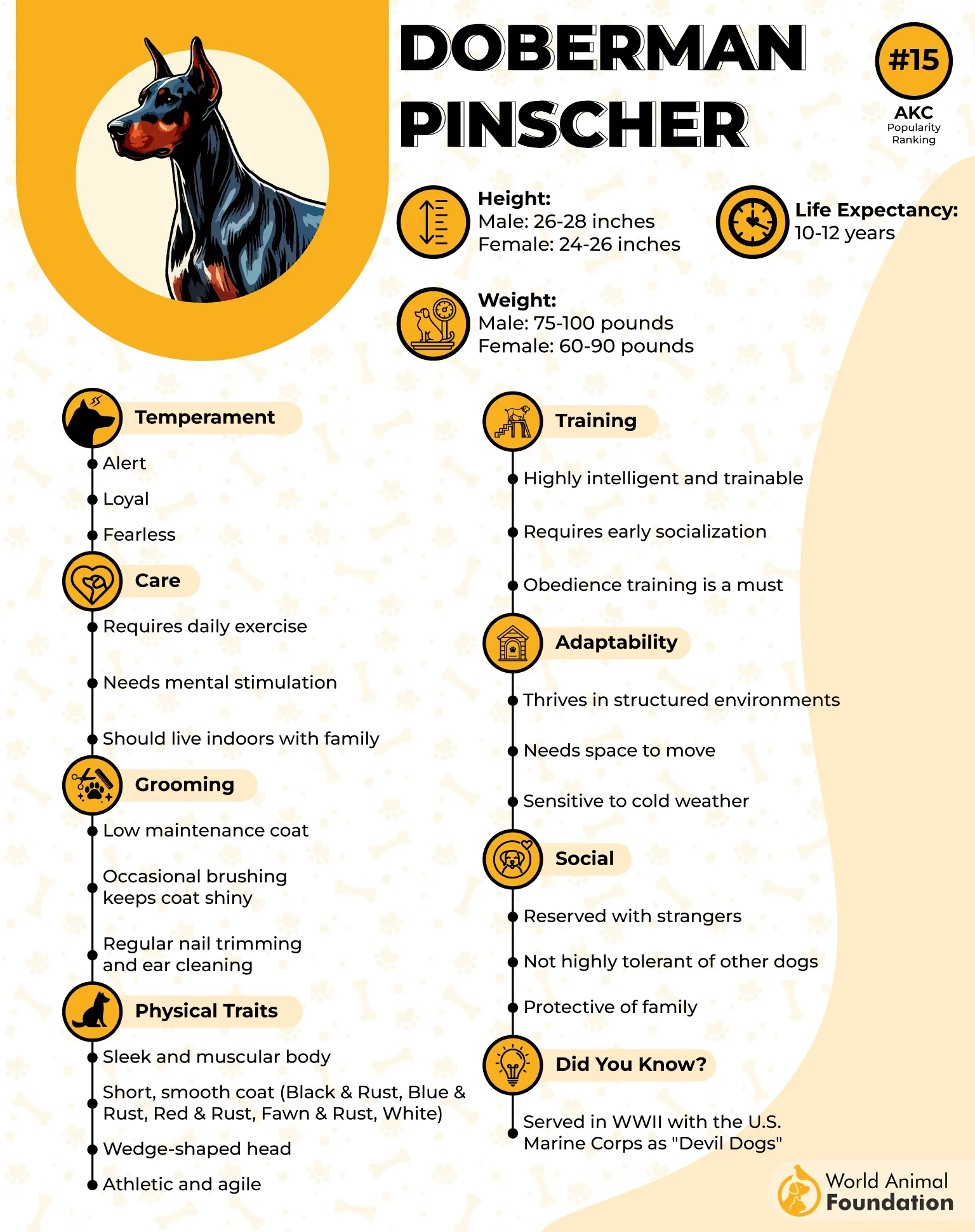
Training a Doberman requires structure and consistency. They are quick learners and highly motivated, but can become bored without mental challenges. When given a job, whether it’s obedience work, tracking, or agility, they excel with enthusiasm. Because of their strength and will, clear leadership and positive reinforcement work best.
Dobermans thrive on daily physical exercise and need space to run or engage in purposeful activity. While they can adapt to suburban living, they’re better suited to homes where they can remain active and mentally engaged. Their alert presence and sharp instincts make them one of the most effective watchdog breeds.
Conclusion
Large dog breeds have long held their place as best guard dogs thanks to their powerful builds, loyal temperaments, and fierce protectiveness. These breeds aren’t just watchful, they often stand between their families and potential threats, driven by strong territorial instincts and a deep-rooted desire to defend. From the muscular Bullmastiff to rare breeds like the Chow Chow, each has a long history of guarding homes, livestock, and even humans from danger.
While genetics play a major role, proper training and early socialization are important factors in shaping a protective dog that can differentiate between welcome guests and real danger. Many of these breeds are recognized by the American Kennel Club in the working group, highlighting their readiness for task-driven environments. With firm guidance, they can be both family companions and dependable sentries.
Owning a large and powerful breed comes with great responsibility. These dogs are not inherently aggressive, but they need structure and engagement to channel their instincts positively. For those willing to invest in the right training and environment, these dogs offer more than security; they become loyal, lifelong best friends.


